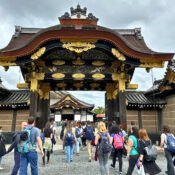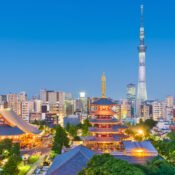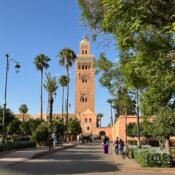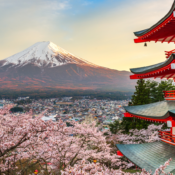3 Days in Kyoto Itinerary: The Perfect Travel Guide for First-Time Visitors
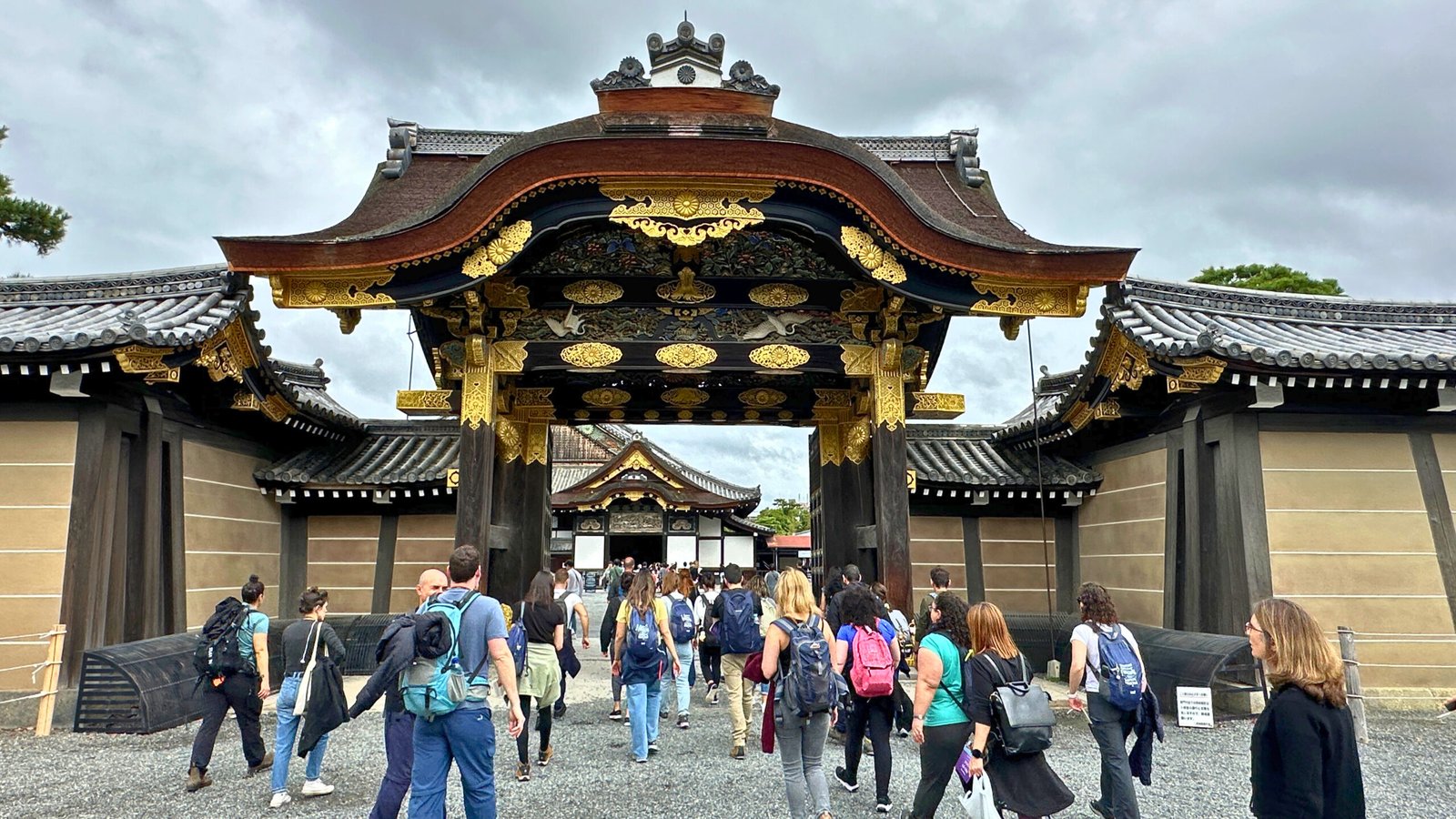
3 Days in Kyoto Itinerary: The Perfect Travel Guide for First-Time Visitors
Planning a trip to Kyoto and wondering how to make the most of your time? This 3 Days in Kyoto Itinerary is your ultimate guide to exploring the city’s breathtaking temples, stunning gardens, and rich cultural heritage. Kyoto is one of the best places to visit in Japan, offering an unparalleled blend of history, tradition, and scenic beauty. Whether you’re a history buff, a foodie, or a nature lover, Kyoto offers an unforgettable experience. This itinerary is designed to help first-time travelers easily navigate Kyoto while discovering its must-see attractions, hidden gems, and local culinary delights. Get ready for three days of awe-inspiring sights, delicious food, and immersive cultural experiences!
Check out our YouTube video about Japan, which takes you through Japan’s top destinations you must go.

Table of Contents
Best Time to Visit Kyoto
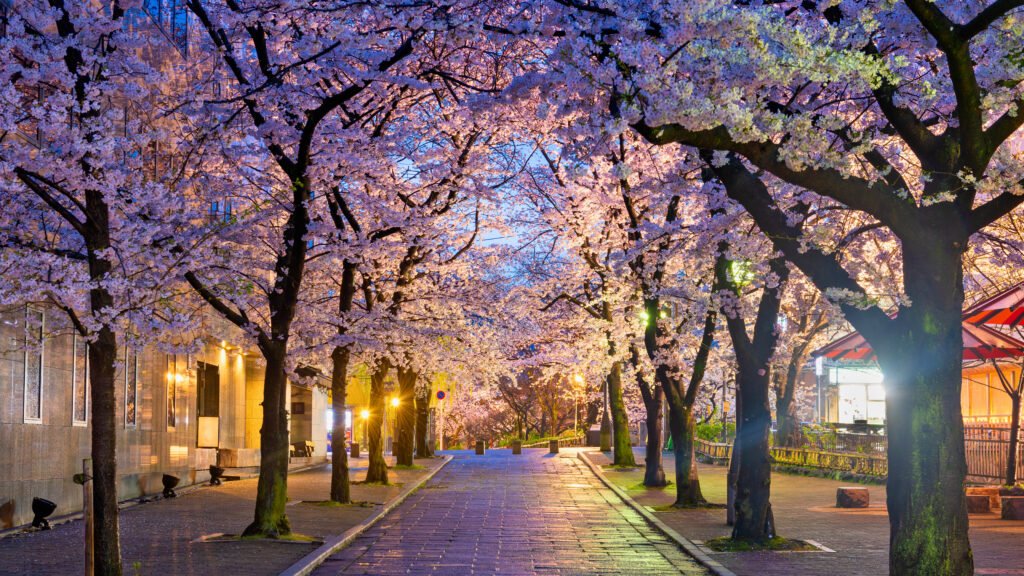
Kyoto is a year-round destination, but certain seasons enhance its charm. Here’s what you need to know:
- Spring (March to May): This is one of the most popular times to visit, thanks to the cherry blossoms that bloom in late March and early April. Expect large crowds, especially at Maruyama Park and the Philosopher’s Path. The weather is mild and pleasant, with temperatures ranging from 8°C to 20°C (46°F to 68°F).
- Summer (June to August): Summers in Kyoto can be hot and humid, with occasional rain. Average temperatures range from 22°C to 34°C (72°F to 93°F), and humidity levels are high. However, this is a great time to experience festivals like Gion Matsuri in July.
- Autumn (September to November): If you love fall foliage, Kyoto in November is a dream. The vibrant red and orange maple leaves create a breathtaking backdrop at temples like Tofuku-ji and Eikando. The weather is cool and comfortable, with temperatures between 10°C and 25°C (50°F to 77°F).
- Winter (December to February): Kyoto is quieter in winter, and snowfall adds a magical touch to temples like Kinkaku-ji (Golden Pavilion). It’s also the best time for seasonal specialties like hot pot dishes. Expect cold but dry weather, with temperatures ranging from 0°C to 12°C (32°F to 54°F).
For pleasant weather and fewer crowds, late autumn and early spring are the best times to visit.
Where to Stay in Kyoto
Choosing the right place to stay is essential for maximizing your Kyoto experience. Here are the top areas to consider:
- Gion & Higashiyama (Best for Traditional Atmosphere): This area is perfect for travelers who want to stay in Kyoto’s historic district. You’ll be close to famous sites like Kiyomizu-Dera and Yasaka Shrine, with plenty of ryokan (traditional inns) and boutique hotels.
- Downtown Kyoto (Kawaramachi & Shijo-Dori) (Best for Shopping & Dining): This area is ideal if you prefer a lively atmosphere with modern conveniences. You’ll find plenty of restaurants, shops, and nightlife options, plus easy access to public transport.
- Kyoto Station Area (Best for Convenience): This is a great base if you’re planning day trips outside Kyoto. Hotels here are budget-friendly, and you’ll be near transportation hubs for easy travel.
- Arashiyama (Best for a Peaceful Retreat): If you want a quieter stay surrounded by nature, Arashiyama is a great option. You’ll be near the famous Bamboo Grove and the scenic Katsura River.
Day 1: Exploring Eastern Kyoto
Your first day in Kyoto will take you through the city’s most iconic cultural and historical sites. Wear comfortable shoes as you’ll be walking a lot!
Morning: Discover the Charm of Higashiyama
Kiyomizu-Dera Temple
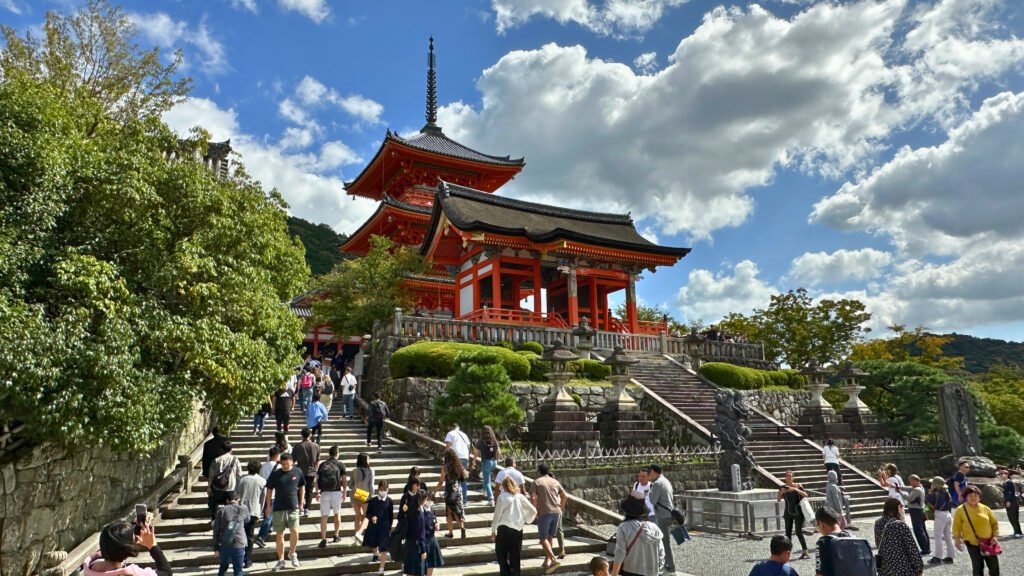
Start your journey at one of Kyoto’s most famous landmarks. Kiyomizu-dera offers spectacular city views, especially in cherry blossom season and autumn. Walk along its famous wooden stage, which was built without nails, and take in the breathtaking scenery. Don’t forget to visit the Otowa Waterfall, where visitors drink from three separate streams; each believed to grant different blessings: longevity, success in studies, and love.
- Opening hours: 6:00 AM – 6:00 PM
- Entrance fee: 400 yen
- Tip: Arrive early (before 9:00 AM) to avoid large tour groups and capture stunning photographs without crowds.
Stroll Through Sannen-zakat and Ninen-zakat
These historic streets lead down from Kiyomizu-dera and are lined with traditional wooden buildings, tea houses, and souvenir shops. The well-preserved area offers a glimpse of Kyoto’s past, with cobblestone pathways, charming cafes, and artisan stores selling handcrafted goods, kimonos, and pottery.
- Must-try: Try a matcha-flavored soft serve ice cream or sample Kyoto-style yatsuhashi (a cinnamon rice sweet).
- Photo Spot: Capture the iconic view of the Yasaka Pagoda standing between the sloping traditional houses.
Afternoon: Temple Hopping and Scenic Walks
Philosopher’s Path
After lunch, take a relaxing walk along the Philosopher’s Path, a picturesque trail lined with cherry trees and quaint cafés. The path follows a small canal and was named after philosopher Nishida Kitaro, who used to meditate while walking this route.
- Length: 2 km (about a 30-minute walk, but allow time for temple stops)
- Best time to visit: Spring (for cherry blossoms) and autumn (for vibrant foliage)
- Nearby Cafés: Stop at a local tea house for a warm cup of matcha or traditional sweets.
Ginkaku-ji (Silver Pavilion)
End your afternoon at Ginkaku-ji, a stunning Zen temple with a beautifully raked sand garden and moss-covered grounds. Unlike its golden counterpart, Kinkaku-ji, the Silver Pavilion has a subtle, understated beauty that reflects Kyoto’s refined aesthetic.
- Opening hours: 8:30 AM – 5:00 PM
- Entrance fee: 500 yen
- Must-see: The meticulously raked “Sea of Silver Sand” garden and the lush moss garden surrounding the temple.
Evening: Gion District and Traditional Kyoto Cuisine
Explore Gion, Kyoto’s Geisha District
As the sun sets, head to Gion, Kyoto’s famous geisha district. Walk along Hanamikoji Street, where you may spot a geisha or maiko (apprentice geisha) heading to an evening engagement. The area is filled with traditional wooden ochaya (tea houses), upscale restaurants, and cultural charm.
- Recommended stop: Yasaka Shrine, which is beautifully illuminated in the evening.
- Tip: Be respectful—photography of geisha without permission is discouraged.
Dinner Recommendation: Kyoto Kaiseki Cuisine
End the night with a kaiseki dinner, a multi-course traditional Japanese meal that showcases Kyoto’s seasonal ingredients.
- Recommended restaurant: Gion Karyo
- Average price: 6,000 – 12,000 yen per person
- Dish highlights: Seasonal delicacies such as yuba (tofu skin), tempura, and grilled fish.
Day 2: Northern and Western Kyoto
Your second day in Kyoto will take you through some of the city’s most iconic temples, scenic gardens, and breathtaking natural sites. Prepare for a mix of historical sites and stunning landscapes as you explore golden pavilions, rock gardens, and bamboo forests.
Morning: Golden Pavilion and Zen Gardens
Kinkaku-ji (Golden Pavilion)
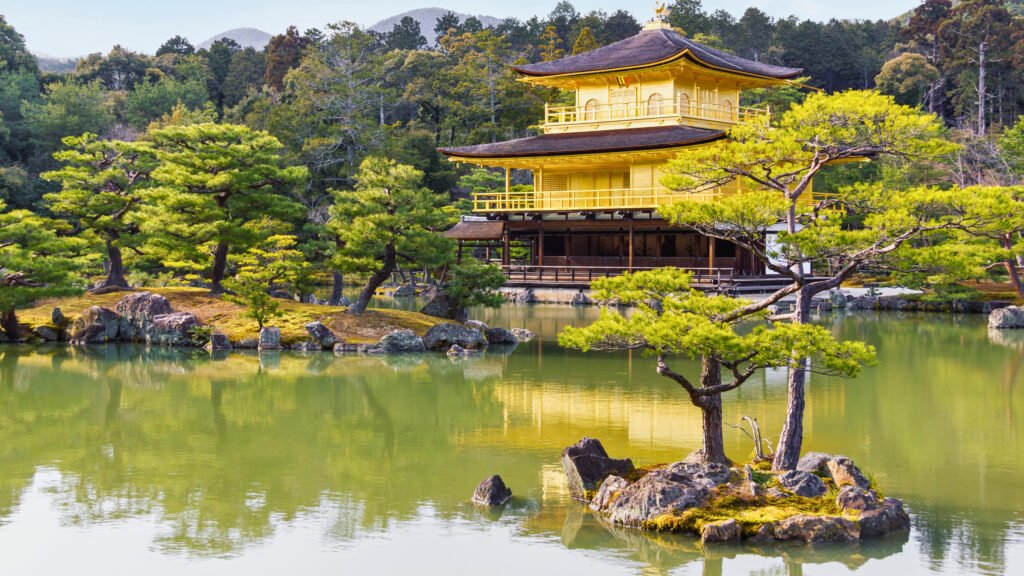
Start your day at Kinkaku-ji, Kyoto’s famous Golden Pavilion. The temple is covered in brilliant gold leaf, making it one of Japan’s most photographed landmarks. The surrounding gardens and reflective pond add to the tranquil beauty of this must-see spot.
- Photo Tip: Visit early in the morning for fewer crowds and the best reflections on the pond.
- Opening hours: 9:00 AM – 5:00 PM
- Entrance fee: 400 yen
Ryoan-ji Temple
A short distance from Kinkaku-ji, Ryoan-ji is home to Kyoto’s most famous rock garden. This Zen garden, designed with 15 carefully placed rocks on a bed of white gravel, is a masterpiece of minimalist aesthetics and meditation.
- Tip: Sit and reflect in front of the rock garden to experience the tranquility of Zen philosophy.
- Opening hours: 8:00 AM – 5:00 PM
- Entrance fee: 500 yen
Afternoon: Arashiyama Bamboo Forest and Temples
Arashiyama Bamboo Grove
After lunch, head west to Arashiyama, a district known for its natural beauty. Walk through the mesmerizing Bamboo Grove, where towering stalks of bamboo sway in the breeze, creating an enchanting atmosphere. This is one of Kyoto’s most photographed locations.
Tenryu-ji Temple
Just a short walk from the Bamboo Grove, Tenryu-ji is a UNESCO World Heritage Site and one of Kyoto’s most important Zen temples. The temple’s stunning gardens, designed by the famous landscape architect Muso Soseki, feature a large pond with scenic views of the Arashiyama mountains.
- Opening hours: 8:30 AM – 5:30 PM
- Entrance fee: 500 yen
- Must-See: The pond garden is designed to be admired in all four seasons.
Monkey Park Iwatayama (Optional Activity)
For those looking for a fun side trip, hike up to Monkey Park Iwatayama, where you can interact with wild Japanese macaques while enjoying panoramic views of Kyoto.
- Hiking time: 20–30 minutes
- Entrance fee: 600 yen
Evening: Scenic Dining by the River
End your day with a relaxing dinner by the Katsura River in Arashiyama. This area is known for its yudofu (tofu hot pot), a local specialty. Choose a traditional restaurant with scenic views of the river and mountains.
- Recommended restaurant: Shoraian (Tofu Kaiseki)
- Average price: 3,000 – 8,000 yen per person
- Tip: Visit the Togetsukyo Bridge at sunset for a breathtaking view of the river and surrounding mountains.
Day 3: Southern Kyoto and Cultural Experiences
For your final day in Kyoto, explore the southern part of the city, known for its iconic shrines, imperial history, and immersive cultural experiences. This day will take you from one of Kyoto’s most famous landmarks to serene gardens and a memorable evening steeped in tradition.
Morning: Fushimi Inari Taisha Shrine
Walk Through the Iconic Torii Gates
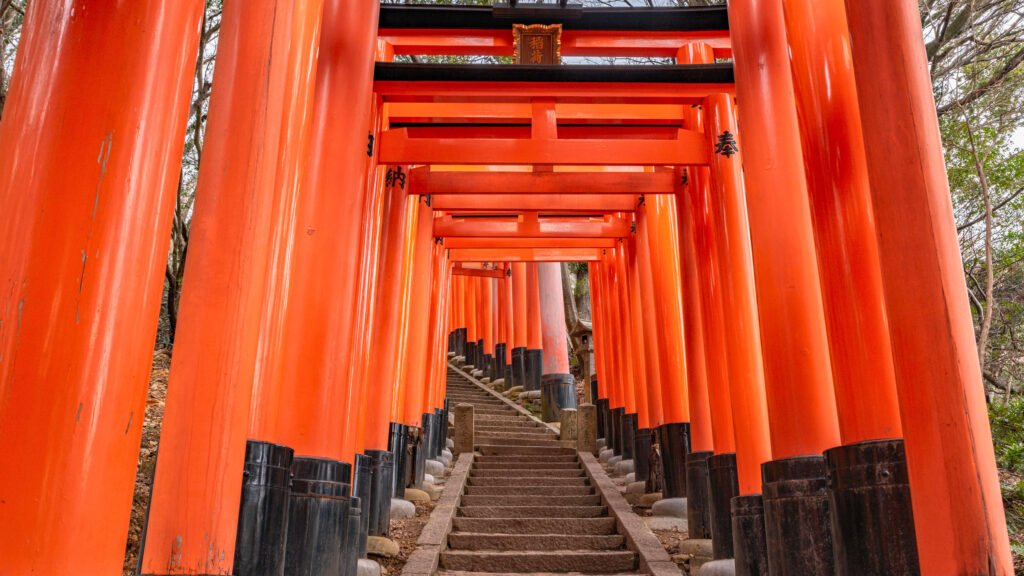
Begin your day early at Fushimi Inari Taisha, one of Kyoto’s most recognizable and breathtaking shrines. This Shinto shrine, dedicated to Inari (the deity of rice and prosperity), is famous for its thousands of vermilion torii gates, which create a mesmerizing tunnel leading up Mount Inari. The full hike to the summit takes about two hours, but even a short walk through the lower sections offers stunning photo opportunities.
- Opening hours: 24 hours
- Entrance fee: Free
- Tip: Arrive before 8:00 AM to avoid crowds, get the best photos and experience the peaceful atmosphere.
- Hiking Time: The full hike to the summit takes 2–3 hours, but you can turn back at the halfway point for a shorter visit.
Afternoon: Nijo Castle and Kyoto Imperial Palace
Explore the Historic Nijo Castle
Next, head to Nijo Castle, a UNESCO World Heritage Site that was once the residence of Tokugawa Ieyasu, the first shogun of the Edo Period. The highlight is the Ninomaru Palace, famous for its “nightingale floors,” which chirp when walked on—a security feature to prevent stealthy intruders. The lavish interior showcases intricate wood carvings and gold leaf decor.
- Opening hours: 8:45 AM – 5:00 PM (last entry at 4:00 PM)
- Entrance fee: 1,030 yen
- Tip: Take your time in the castle gardens, especially during cherry blossom or autumn foliage seasons.
Visit the Kyoto Imperial Palace
A short distance away is the Kyoto Imperial Palace, the former home of Japan’s imperial family. Although the royal family no longer resides here, the palace offers a fascinating glimpse into Japan’s imperial history. Guided tours are available. Stroll through the grand halls and enjoy the tranquil Kyoto Gyoen National Garden.
- Opening hours: 9:00 AM – 5:00 PM
- Entrance fee: Free
- Tip: The Gosho (Imperial Palace) Gardens are particularly beautiful during cherry blossom season.
Evening: Traditional Tea Ceremony and Final Dinner
Experience a Kyoto Tea Ceremony
No trip to Kyoto is complete without participating in a traditional Japanese tea ceremony, a deeply cultural experience that embodies Kyoto’s refined elegance. This experience allows you to witness the ritualistic preparation of matcha (powdered green tea), which is as much about mindfulness as it is about taste. Many tea houses in Gion and Higashiyama offer intimate settings for this cultural ritual.
- Recommended tea house: En Tea House, Camellia Tea Ceremony
- Cost: 2,500 – 4,000 yen per person
- Tip: Some tea houses offer kimono rentals, creating a more immersive experience.
Final Kaiseki Dinner
Wrap up your Kyoto adventure with an authentic kaiseki dinner, a multi-course meal showcasing Kyoto’s seasonal ingredients and meticulous presentation. Kaiseki dining is considered the pinnacle of Japanese cuisine and provides the perfect farewell to your journey.
- Recommended restaurant: Kikunoi (Michelin-starred kaiseki)
- Average price: 15,000 – 30,000 yen per person
- Tip: Book your reservation in advance, especially for fine dining establishments, as kaiseki restaurants are often fully booked.
Kyoto Travel Tips
To make the most of your Kyoto adventure, here are essential travel tips covering transportation, budgeting, and cultural etiquette.
Transportation in Kyoto
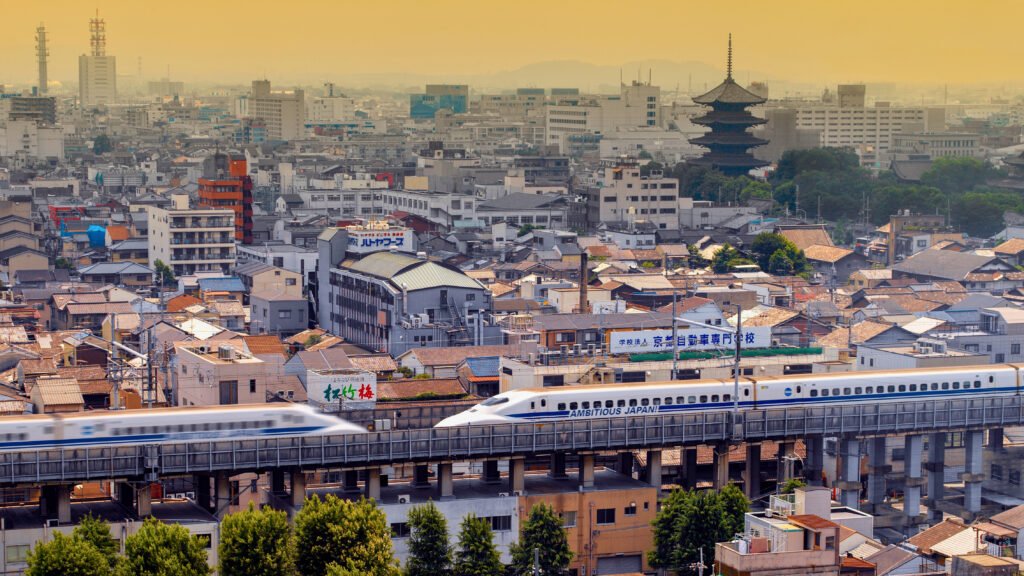
Kyoto’s transportation system is efficient, but knowing the best ways to get around can save time and money:
- Kyoto City Bus Pass: A one-day bus pass costs 600 yen and allows unlimited rides within the city. Most major attractions, like Kinkaku-ji, Gion, and Kiyomizu-dera, are accessible by bus.
- JR Train Lines: The JR Sagano Line is useful for reaching Arashiyama, while the JR Nara Line connects Kyoto to Fushimi Inari.
- Subway System: Kyoto has two main subway lines: the Karasuma Line (North-South) and the Tozai Line (East-West). Though limited, the subway is useful for reaching places like Kyoto Station and Nijo Castle.
- Renting a Bicycle: Kyoto is a bike-friendly city, and renting a bicycle is a great way to explore quieter streets, hidden shrines, and parks at your own pace.
- Taxis & Ride-Sharing: Taxis are widely available but expensive. They are useful when traveling in groups or during late hours when buses are less frequent.
- IC Cards (ICOCA, Suica, or Pasmo): These prepaid transportation cards allow seamless travel on buses, subways, and trains in Kyoto and other cities in Japan.
Budgeting for Your Trip
Kyoto can be visited on different budgets. Here’s a rough estimate of daily expenses:
- Budget Traveler (8,000 – 12,000 yen per day)
- Stay in hostels or budget hotels (3,000 – 6,000 yen per night).
- Eat at local markets like Nishiki Market or try street food (1,500 – 3,000 yen daily).
- Use a Kyoto City Bus Pass (600 yen/day).
- Visit free attractions like Fushimi Inari Taisha, the Kyoto Imperial Palace, and Arashiyama Bamboo Grove.
- Mid-Range Traveler (12,000 – 25,000 yen per day)
- Stay in 3-star hotels or traditional ryokan (8,000 – 15,000 yen per night).
- Dine at mid-range restaurants, including ramen shops, izakayas, or sushi spots (3,000 – 6,000 yen daily).
- Use a combination of buses, subways, and taxis (1,000 – 2,000 yen daily).
- Pay entrance fees for major temples (400 – 1,000 yen per site).
- Luxury Traveler (25,000 yen+ per day)
- Stay in luxury ryokan or 5-star hotels (30,000 yen+ per night).
- Enjoy kaiseki dining or Michelin-starred restaurants (15,000 yen+ per meal).
- Hire private guides or taxis for convenience.
- Book exclusive cultural experiences like private tea ceremonies or samurai lessons.
Cultural Etiquette
Japan has a rich cultural heritage, and respecting local customs will enhance your experience in Kyoto.
- Bowing as a Greeting: A slight bow is a polite way to greet people in Kyoto.
- Shoes Off Indoors: Always remove your shoes before entering temples, ryokan, or traditional restaurants.
- Quiet Conversations: Public spaces like temples and buses are considered places of tranquility. Keep your voice low.
- No Eating While Walking: While street food is popular, it is considered impolite to eat while walking. Find a designated area to enjoy your snack.
- Photography Etiquette: Some temples and shrines prohibit photography, so always check for signs. Never take pictures of geisha without permission.
- Handling Money Properly: When paying at stores, place cash in the tray instead of handing it directly to the cashier.
- Respect the Temples and Shrines: Avoid touching artifacts and do not step on sacred areas. At Shinto shrines, cleanse your hands at the purification fountain before entering.
Local Food Recommendations
Kyoto is known for its refined and seasonal cuisine, influenced by its history as Japan’s imperial capital. From traditional multi-course meals to street food delights, here are the must-try dishes and where to find them.
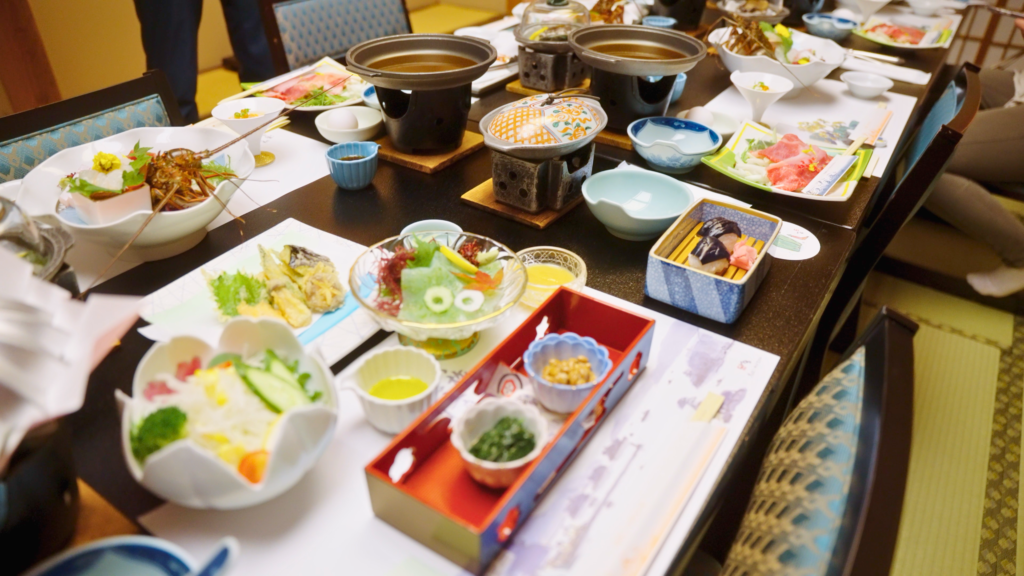
Must-Try Dishes in Kyoto
- Kaiseki Ryori (Traditional Multi-Course Meal): Kaiseki is Kyoto’s most famous and luxurious dining experience. It consists of multiple meticulously prepared small dishes, each highlighting seasonal ingredients. This meal embodies Japanese culinary artistry and balance.
- Where to try: Kikunoi (Michelin-starred), Hyotei, Roan Kikunoi
- Price range: 10,000 – 30,000 yen per person
- Yudofu (Tofu Hot Pot): A specialty of Kyoto, yudofu is a simple yet delicious hot pot dish made with Kyoto’s famous silky tofu simmered in a light kombu broth. This dish is especially comforting in winter.
- Where to try: Okutan Nanzenji, Shoraian (Arashiyama)
- Price range: 1,500 – 4,000 yen per person
- Obanzai (Kyoto-Style Home Cooking): Obanzai is a traditional Kyoto-style meal consisting of small seasonal vegetable-based dishes. This humble and healthy cuisine is a must-try for food lovers.
- Where to try: Kyoto Obanzai Warai, Manzara Honten
- Price range: 2,000 – 5,000 yen per person
- Yatsuhashi (Kyoto’s Signature Sweet): Yatsuhashi is Kyoto’s most famous wagashi (traditional sweet), made of rice flour, sugar, and cinnamon. It comes in both baked (crunchy) and raw (soft mochi-like) versions, with fillings like matcha, red bean, or chocolate.
- Where to buy: Nishiki Market, Honke Nishio Yatsuhashi
- Price range: 500 – 1,500 yen per box
- Matcha (Green Tea) Desserts: Kyoto is the heart of Japan’s matcha culture, producing some of the world’s finest green tea. Matcha-infused sweets, from soft-serve ice cream to mochi and parfaits, are a must-try!
- Where to try: Tsujiri (Gion), Nakamura Tokichi, Saryo Tsujiri
- Price range: 500 – 2,000 yen per item
Top Restaurants and Markets for Kyoto Cuisine
- Nishiki Market – Kyoto’s Food Street: Known as “Kyoto’s Kitchen,” Nishiki Market is the best place to sample a variety of local flavors in one place. You’ll find everything from fresh seafood and pickles to grilled skewers and sweets.
- Must-try foods: Tamagoyaki (Japanese omelet), seafood skewers, yuba (tofu skin), and matcha sweets
- Opening hours: 9:00 AM – 6:00 PM (varies by shop)
- Pontocho Alley – Traditional Dining by the River: This atmospheric alley, lined with traditional restaurants and tea houses, is one of the best places for a memorable Kyoto dining experience. Enjoy riverside dining in spring and summer!
- Best for: Kaiseki cuisine, grilled yakitori, and Kyoto-style sushi
- Gion District – Kyoto’s Geisha Quarter: For an authentic and cultural dining experience, Gion is the best place to find kaiseki, Kyoto-style sushi, and seasonal delicacies.
- Recommended restaurants: Gion Nanba (Kaiseki), Izuju (Kyoto-style sushi)
Conclusion
Kyoto is a city that seamlessly blends history, tradition, and natural beauty. This 3 Days in Kyoto Itinerary ensures that first-time visitors experience its most iconic landmarks, serene temples, cultural treasures, and exquisite cuisine.
From wandering through the vermilion torii gates of Fushimi Inari Taisha to strolling through the bamboo forests of Arashiyama and enjoying an authentic kaiseki dinner, Kyoto offers a travel experience unlike any other. Whether you’re drawn to its rich history, breathtaking landscapes, or world-class cuisine, the city has something unforgettable to offer every traveler.
Final Travel Tips for Kyoto:
- Start your mornings early to avoid crowds at popular attractions.
- Use Kyoto’s public transportation and consider renting a bike to explore smaller streets.
- Try local food specialties, from yudofu to matcha-infused desserts.
- Respect Kyoto’s cultural etiquette—from quiet conversations to removing shoes in traditional spaces.
- Plan your trip according to the seasons, whether it’s cherry blossoms in spring or autumn foliage.
This itinerary gives you a perfect balance of history, culture, nature, and culinary delights, making the most of your three days in Kyoto. For more information and travel inspiration, explore the Kyoto tourism website.
Are you planning your Kyoto adventure? Let us know your thoughts, and feel free to share your experiences or ask any questions in the comments below!

For more travel guides on Japan and Asia, check out our posts:
- Best Places To Visit In Japan: Your Ultimate Guide To The Top 15 Must-See Destinations
- Best Places To Visit In Asia: Top 10 Must-See Destinations
- 15 Best Places To Visit In Southeast Asia: A Traveler’s Ultimate Guide
- Best Places To Visit In Malaysia: Top 15 Must-See Destinations For First-Time Travelers
- 15 Best Places To Visit In Sri Lanka: A Complete Travel Guide To Top Destinations
- Best Places To Visit In Thailand: Top 15 Unmissable Destinations, Travel Tips & Local Gems
- Best Places To Visit In Vietnam: 15 Must-See Destinations For An Unforgettable Journey
Trending Travel Destinations
- 15 Best Places To Visit In Portugal: A Complete Guide To Top Destinations, Attractions & Local Insights
- 15 Best Places To Visit In Greece: Discover Iconic Landmarks, Hidden Gems, And Local Favorites
- Best Places To Visit In Italy: Top 15 Must-See Destinations
- The 15 Best Places To Visit In Canada: Your Ultimate Guide To Canada’s Must-See Destinations
- Best Places To Visit In USA: Top 15 Must-See Destinations And Travel Guide For Every Season
Don’t forget to follow us on YouTube, Instagram, Facebook, and Twitter for more travel tips and inspiration.
If this post was helpful, check out our blog for more travel guides and tips!

